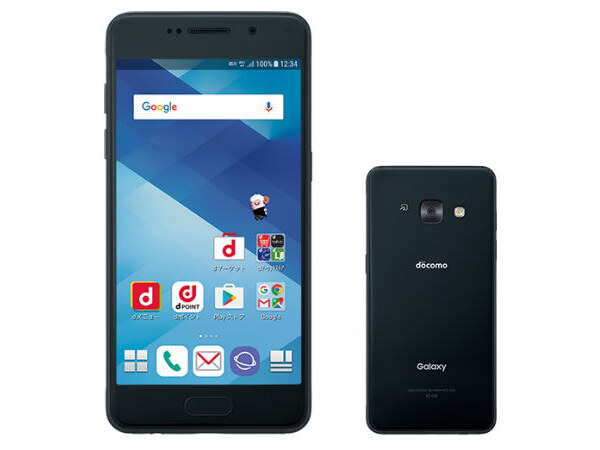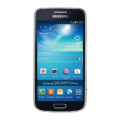Samsung Galaxy Feel





-
Processor: 1.6GHz octa-core
-
RAM: 3GB RAM
-
Storage: 32GB
-
Display: 4.7-inch
-
Camera: 16-megapixel/ 5-megapixel
-
OS: Android 7.0 Nougat
Samsung has revealed a new mid-range Android Phone that is Samsung Galaxy Feel. The phone comes Opal Pink, Moon White, and Indigo Black colours variants. The price of Galaxy Feel is not available Yet. It has a feature of fingerprint sensor that situated underneath the Home Button in the front.
Some specs of the Samsung Galaxy Feel are:
The Samsung Galaxy Feel sports a 4.7-inch HD Super AMOLED touchscreen display. It has a display resolution of 720×1280 pixels. The display glass back with the metal edge. The volume buttons sit on the left edge and the power button on the right edge. The dimensions measure at 138 x 67 x 8.3mm and the smartphone weight 149 g. It also sports dust and water resistance with an IP6X rating.
The Samsung Galaxy Feel runs on the latest Android 7.0 Nougat operating system software. It is powered by a 1.6GHz octa-core processor paired with 3GB of RAM. The phone packs an internal storage 32 GB is can be expandable via MicroSD card. It packs a 3000mAh battery that is rated to deliver up to 170 hours of standby time and supports quick charging. It has a feature of fully charge in 110 minutes that is quite superb.
The Samsung Galaxy Feel sports a 16-megapixel rear camera and a 5-megapixel front camera for selfies and video chats. Sensors on the phone include Accelerometer sensor, Proximity sensor, and the Fingerprint sensor. Connectivity options have included:
- 4G VoLTE,
- WiFi 802.11 a/b/g/n,
- Bluetooth version 4.2,
- NFC,
- 3.5mm audio jack, and
- USB- USB Type-C port
Samsung Galaxy Feel - Specs
Network
Design
-
Type Design Type called form factor refers to a mobile phone's size, shape, and style as well as the layout and position of major components of phone. There are three major form factors seen in mobile phones => bar phones, folding phones and sliding phones.Bar
-
Dimensions138 x 67 x 8.3mm
-
Weight149 g
-
ColorsOpal Pink, Moon White, and Indigo Black
Display
-
Display Type Display Technology => A number of display technologies and types used in mobile phones => TFT (Thin Film Transistor), IPS (In-Place Switching), OLED (Organic Light Emitting Diode), AMOLED (Active-Matrix Organic Light-Emitting Diode), Super AMOLED (an even advanced version of AMOLED), Resistive Touchscreen (Resistive touchscreens contain two layer of conductive material with a very small gap between them which acts as a resistance), Capacitive Touchsceen (Capacitive touchscreen technology consists of a layer of glass coated with a transparent conductor)Super AMOLED
-
Size4.7-inch
-
Resolution720x1280 pixels
-
Display Colors Display Colors is refers to the number of different shades of colors that the screen is capable of displaying => 64K colors, 256K colors and 16 million colors, Obviously 16M is highest available range of colors and better than others.16M colors
-
Display Protection Display Protection => Gorilla Glass is a special alkali-aluminosilicate glass shield with exceptional damage resistance that helps protect mobile displays from scratches, drops, and bumps of everyday use, It is always better to go for a smartphone with Gorilla Glass for that added protection and peace of mind.Dust and water resistance with an IP6X rating.
Software
-
Operating System OS => Every computer system run on a base software called Operating System (OS). Operating System controls all basic operations of the computer (such as smartphone, PDAs, tablet computers and other handheld devices). The Operating System allows the user to install and run third party applications (apps), apps are used to add new functionality to the device.Android 7.0 Nougat
Hardware
-
CPU CPU (Central Processing Unit) mostly known as processors, CPU processes instructions in order to carry out certain functions that make your device operate properly. Processors are often described as the brain of computers, smartphones and tablets, Smartphones and tablets rely on processors to carry out their every task, Processors are an incredibly important factor in selecting any type of computing device, including your smartphone.1.6GHz octa-core
-
GPU GPU (Graphics Processing Unit) is a single-chip processor designed to rapidly manipulate and alter memory to accelerate the creation of images in a frame buffer intended for output to a display, This includes things such as lighting effects, object transformations, and 3D motion.
-
RAM (Memory) RAM (Random Access Memory) is a type of computer memory that can be accessed randomly, any byte of memory can be accessed without touching the preceding bytes that allows information to be stored and accessed quickly from random locations. RAM is the most common type of memory found in computer systems, smartphones, tablets and other electronic devices.3GB RAM
-
Internal Storage Internal Storage is a data storage space (flash memory) mostly used in smartphones, tablets and other electronic devices where operating system, apps, music, photos, videos, files and other user data Is stored.32 GB
-
Card Slot Memory Card Slot is a special slot for inserting a memory card. Memory cards allow you to expand the phone's built-in memory, A memory card (sometimes called a flash memory card or a storage card) is a small storage medium used to store data such as text, pictures, audio, and video, for use on small, portable or remote computing devices such as mobile phones, mp3 players, digital cameras.Yes
-
Sensors Sensors are electronic components that detects and responds to some type of input from the physical environment. The specific input could be light, heat, motion, moisture, pressure and location, The output is generally a signal that is converted to use in computing systems, a location sensor, such as a GPS receiver is able to detect current location of your electronic device.Accelerometer sensor, Proximity sensor, and the Fingerprint sensor
Camera
-
Primary Camera is able to capture photographs and usually videos, The most important characteristics of a camera are the resolution (measured in megapixels), lens focus type (fixed or automatic), higher megapixel cameras are known to capture higher quality photos, but not always a good measurement of the photos quality.16-megapixel
-
Camera FeaturesGeo-tagging, LED Flash
Battery
-
Battery Type Battery Type => Cell phones run on various kinds of batteries depending on the manufacturer, phone size or shape and features. There are basically four types of cell phone batteries => Lithium Polymer, Lithium Ion, Nickel Metal Hydride and Nickel Cadmium.Li-Ion (Lithium Ion)
-
Capacity Battery Capacity is a measure (typically in Amp-hr) of the charge stored by the battery, and is determined by the mass of active material contained in the battery. The battery capacity represents the maximum amount of energy that can be extracted from the battery under certain conditions.3000 mAh
Connectivity
-
Bluetooth Bluetooth is a wireless communications technology for exchanging data between mobile phones, headsets, computers and other network devices over short distances without wires, Bluetooth technology was primarily designed to support simple wireless networking of personal consumer devices.4.2
-
Wi-fi Wi-Fi is a popular wireless networking technology using radio waves to provide high-speed network connections that allows devices to communicate without cords or cables, Wi-Fi is increasingly becoming the preferred mode of internet connectivity all over the world.WiFi 802.11 a/b/g/n,
-
Infrared Infrared connectivity is an old wireless technology used to connect two electronic devices. It uses a beam of infrared light to transmit information and so requires direct line of sight and operates only at close range.
-
USBUSB Type-C port
-
NFC NFC (Near field communication) is a set of standards for smartphones and similar devices to establish peer-to-peer radio communications with each other by touching them together or bringing them into proximity, usually no more than a few inches.
-
Headphone Jack






